Coordination
Background
Effective coordination can prevent gaps and overlaps in humanitarian responses, ensure the impact of CVA is optimised for the benefit of crisis affected populations, whilst also making the most of limited humanitarian funding. But the CALP Network’s State of the World’s Cash report found that cash coordination is seen as weak and ad hoc, and that this is having serious operational impact.
Ninety-five donors, international and national NGOs, private sector actors and one UN agency have called for clarity on two key issues surrounding cash coordination:
- Who should be accountable for ensuring effective cash coordination, and
- What the scope of Cash Working Groups should be, including in relation to multipurpose cash.
We urgently need to build on what works and provide clarity at the global level on the questions above, whilst adapting to different contexts. Clear decisions based on the impact on affected populations rather than agency politics are long overdue.
Current priorities
We aim to contribute to progress on this issue on three levels: supporting Cash Working Groups at the regional level; contributing to practical solutions for cash coordination at the global level; and convening evidence-based discussion on the key issues, highlighting critical decision points and opportunities for progress.
Featured content

Cash Coordination – LIVE timeline
Page
The latest updates on cash coordination as they unfold.

95 Organisations Sign Letter Calling for Strengthened Cash Coordination
News
Today a letter signed by 95 organisations was handed into the Emergency Relief Coordinator (ERC) urging the Inter-Agency Standing Committee (IASC) to take a decision on the leadership and scope of cash coordination in the coming year.

Is cash transforming the humanitarian system or is the system limiting how cash is used?
Blog Post
At the State of World’s Cash 2020 launch event, Sorcha O’Callaghan, Director of Humanitarian Policy Group at ODI warned that, “Cash offers a huge transformative potential, but as far as the system is privileging the interest of the agencies over people in crisis, we won’t be able to see it”. If you missed the State of the World's Cash 2020 launch we're sharing highlights. Quote 4...
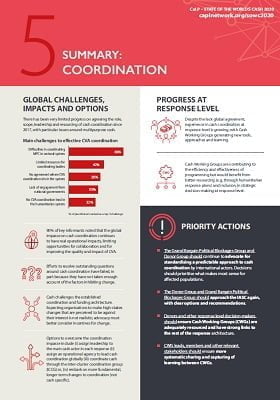
State of the World’s Cash 2020 Chapter 5 summary: Coordination
Report
There has been very limited progress on cash coordination since 2017. Cash continues to challenge the established coordination and funding architecture, and efforts to resolve outstanding questions around cash coordination have failed. Despite the lack of global agreement, Cash Working Groups are pushing forward and contributing to improved programming, and generating new approaches. This...
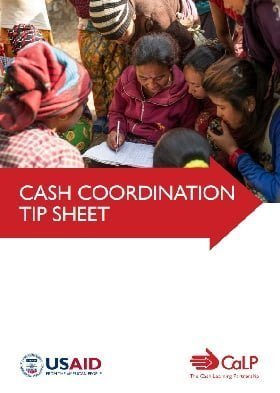
Cash Coordination Tip Sheet
Guidelines and Tools
This tip sheet sets out established best practice, key guidance and resources for all aspects of cash coordination, intended as a clear, accessible and action-oriented guide for those engaged in coordination of cash and voucher assistance (CVA) at the field level.
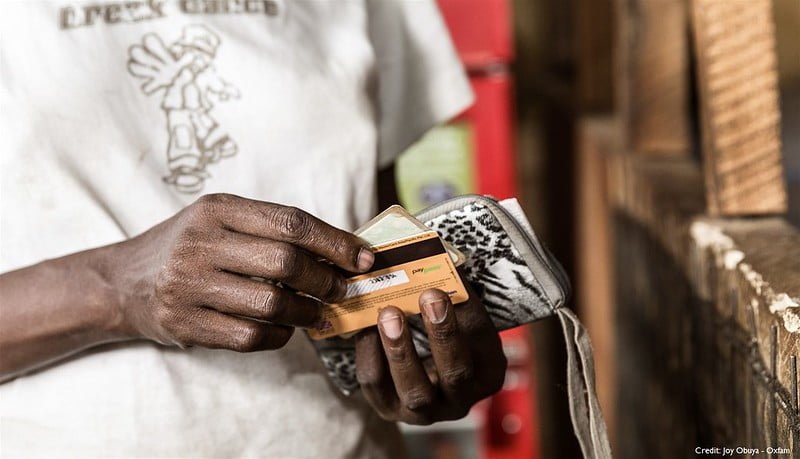
Introducing the Cash Coordination Tip Sheet
Webinar
The CALP Network has developed a tipsheet setting out established best practice and key guidance and resources for all aspects of cash coordination, intended as a clear, accessible and action-oriented guide for those engaged in coordination of cash and voucher assistance at the field level.

Cash Coordination: A proposal from members in MENA
Blog Post
Earlier this year the CALP Network undertook regional consultations to explore options for cash coordination. This blog lays out recommendations from participants from the Middle East and North Africa who sketched out what cash coordination, and coordination more broadly, could look like in future to support a more effective, efficient and accountable response.
Thematic lead
Latest

From Feasible to Life-Saving: The urgent case for cash at scale in Sudan
Case Study
About 18 million people are currently facing crisis (IPC 3) or emergency (IPC 4) levels of food insecurity across Sudan. This means more than one in three people are suffering from acute hunger in the country. As the conflict rages on, food insecurity is rapidly deteriorating, and communities in many...

Aligning Aid: Recipient perspectives on humanitarian cash and social protection in Ukraine
Report
In January 2023, Ground Truth Solutions and the CCD set out to understand the
experiences and perceptions of people who had applied for or received cash
assistance in Ukraine, both from humanitarian organisations and through government
social protection schemes. The Ukrainian cash response is the...

MENA Membership Engagement Event
Event
Online- March 6th, 2024, 11:00-13:30 Amman time
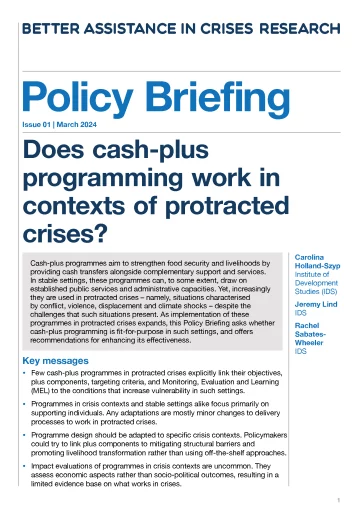
Does Cash-Plus Programming Work in Contexts of Protracted Crises?
Policy paper
Cash-plus programmes aim to strengthen food security and livelihoods by providing cash transfers alongside complementary support and services. In stable settings, these programmes can, to some extent, draw on established public services and administrative capacities. Yet, increasingly they are used in...

Community Insight Survey for Cash-Based Programs in Afghanistan
Case Study
The Community Insight Survey for Cash-Based Programs by iMMAP Inc. in Afghanistan provides critical insights into the effectiveness of cash-based humanitarian assistance in the country. Conducted across diverse regions of Afghanistan, the survey highlights the positive impact of cash assistance on...

Calculating the GHG Footprint of Food Aid using Cash Transfers
Case Study
In early 2021, Action Against Hunger (ACF) France is launching a GHG emissions assessment with other members of the Humanitarian Environment Network (REH). The scope of accounting target all emissions, and very quickly some activities, which can generate considerable variability in the results, are...
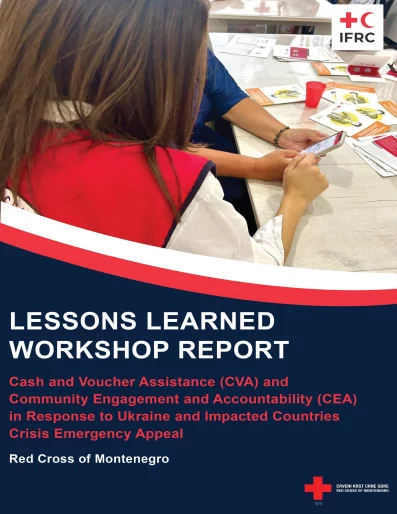
Lessons Learned Workshop Report: Cash and Voucher Assistance (CVA) and Community Engagement and Accountability (CEA) in Response to Ukraine and Impacted Countries Crisis Emergency Appeal
Report
Since the escalation of the conflict in Ukraine at the end of February 2022, approximately one-third of people from Ukraine have been displaced, leading to one of the largest displacement crises in the world. From the period of 24 February 2022 until 20 November 2023, 182,047 displaced people from Ukraine...

Cash Feasibility Snapshot Report – Site Assessment (Round 34) and Village Assessment Survey (Round 17), August – September 2023
Report
Between August and September 2023, the International Organization for Migration (IOM) Data and Research Unit (DRU), through its Displacement Tracking Matrix (DTM) methodology, deployed the Site Assessment (SA) and Village Assessment Survey (VAS) tools to assess the mobility, needs and vulnerabilities of...

“No-one has ever helped me like this.” User journeys of cash recipients in Ukraine
Case Study
Russia‘s full-scale invasion of Ukraine in February 2022 has caused a severe
humanitarian crisis – with widespread displacement, destruction of infrastructure, and
an urgent need for humanitarian assistance. In response, the humanitarian community
has supported the Ukrainian government to initiate...

Just in Time: Advancing anticipatory cash in Pakistan
Guidelines and Tools
Cash and voucher assistance in humanitarian response has grown significantly in recent years, with evidence showing that it supports the agency of recipients, reduces harmful coping strategies, supports local economies, and is a cost-effective form of humanitarian assistance.
The use of cash as a form...
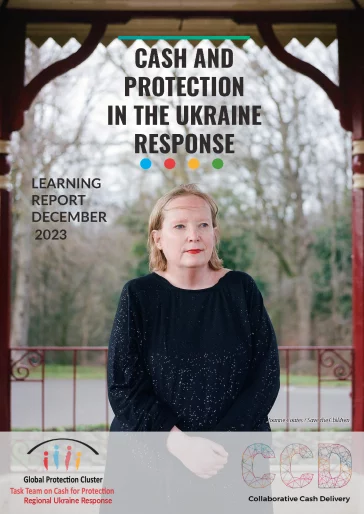
Cash and Protection in the Ukraine Response
Report
This learning report stems from bilateral discussions with the Collaborative Cash Delivery (CCD) Network’s members in Ukraine and Poland, many of whom were on the cusp of designing or implementing C4P programmes as part of the Ukraine response and were seeking learning and experience from each other.

Will our Opinion Matter? Community consultations on the design of multi-purpose cash programmes in Lebanon
Report
Since late 2019, Lebanon has been grappling with a severe economic and financial crisis. The Lebanese lira has lost more than 98 percent of its value, and over half of the Lebanese population is estimated to be living in poverty. The Government of Lebanon and development and humanitarian agencies have...

Impact Evaluation of Cash-Based Transfers on Food Security and Gender Equality in El Salvador
Case Study
1. Gender inequality is pervasive, particularly in developing countries such as El Salvador, and its potential welfare implications are concerning. In El Salvador, only 45.4 percent of women participate in the labour market, in contrast to 74.4 percent of men. 2. Economic development, gender equality in...
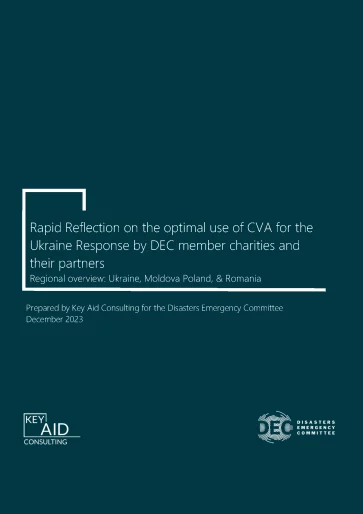
Rapid Reflection on the Optimal Use of CVA for the Ukraine Response by DEC Member Charities and their Partners
Report
Since February 2022, Ukraine and the neighbouring countries are facing a humanitarian crisis of unparalleled scale, ranking among the fastest-growing crises observed in the past decade and the largest in Europe since the end of World War II. In the first two months of conflict, more than 30 percent of...

Cash & Voucher Assistance for Child Protection: A case study from Save the Children in Lithuania
Case Study
This infographic gathers key programmatic data from Save the Children CVA operations in Lithuania, within the larger context of the Ukrainian crisis, between December 2022 and April 2023, which aimed to assess and highlight the impact that CVA has on child protection outcomes, with a specific focus on...
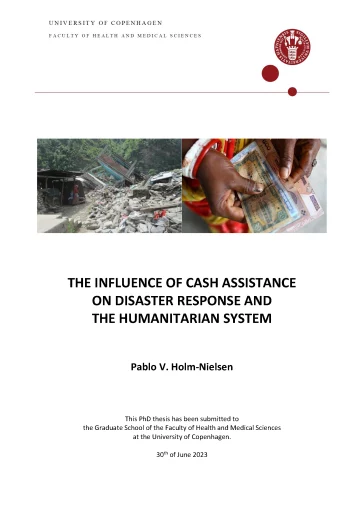
The Influence of Cash Assistance on Disaster Response and the Humanitarian System
Report
The research presented in this thesis is based on four studies that cover various aspects of the
transformative effect of CVA on humanitarian organizations and the humanitarian system. Study 1 shows the changes that the humanitarian organizations have experienced due to the shift to CVA. New skillsets...

Data Sharing in Humanitarian Cash and Voucher Assistance (CVA): A look at risks, threats and mitigation technologies
Report
This research, conducted by The Engine Room between March and October 2023, was commissioned by the Norwegian Refugee Council in collaboration with the DIGID consortium to map risks and threats related to data sharing in CVA, and to evaluate potential technological approaches that might mitigate these...

Joint Market Assessment Round 2
Report
This report assesses the feasibility of implementing Cash and Voucher Assistance (CVA), specifically Multipurpose Cash Assistance (MPCA), to support individuals impacted by the February 6 earthquakes. The evaluation focuses on the acceptance of various forms of cash modalities, availability of key items,...

Cash and Voucher Assistance at Scale: Addressing food insecurity by supporting families in the Netherlands
Case Study
With an increasing number of families experiencing financial trouble in the Netherlands, in September 2022, the Dutch parliament voted to allocate €100 million for free school meals in vulnerable neighbourhoods across the country. After the proposal was approved, the Dutch Ministry of Education, Culture...
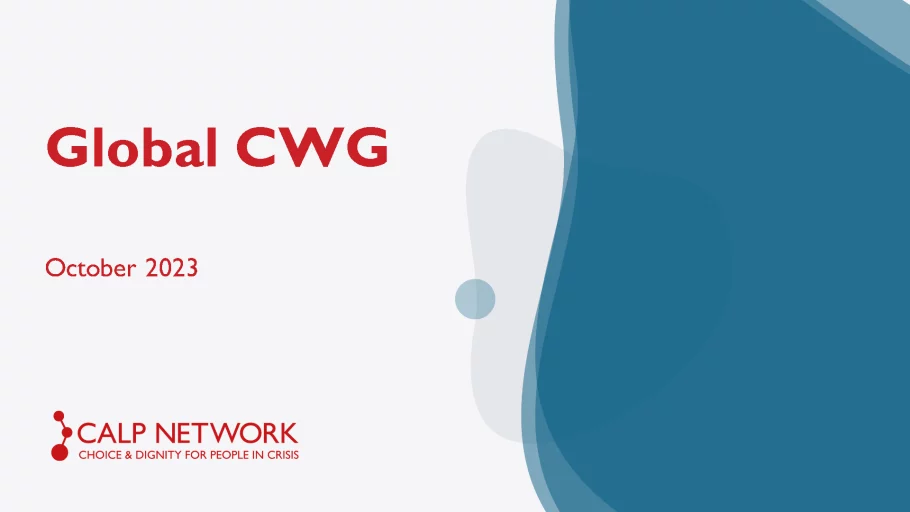
Global Cash Working Group Meeting – October 2023
Presentation
This slide deck was presented at the October meeting of the Global Cash Working Group meeting.
During the October meeting, we:
Launched the process to update the Terms of Reference of the GCWG to clarify its purpose and linkages to other structures, particularly given the role out of the 2022...



